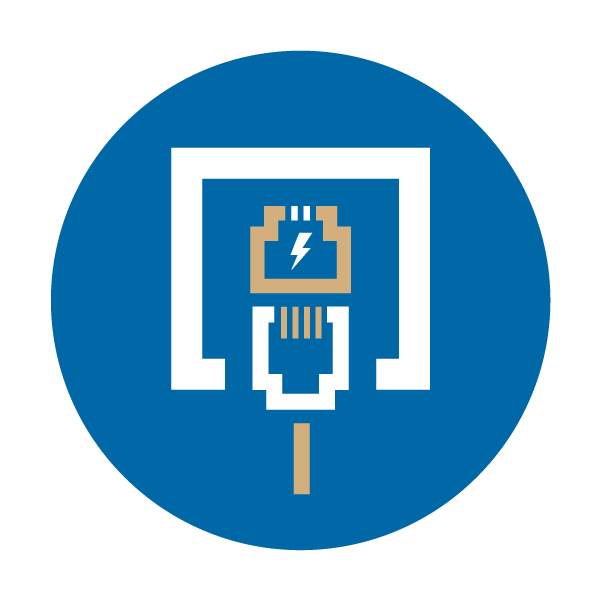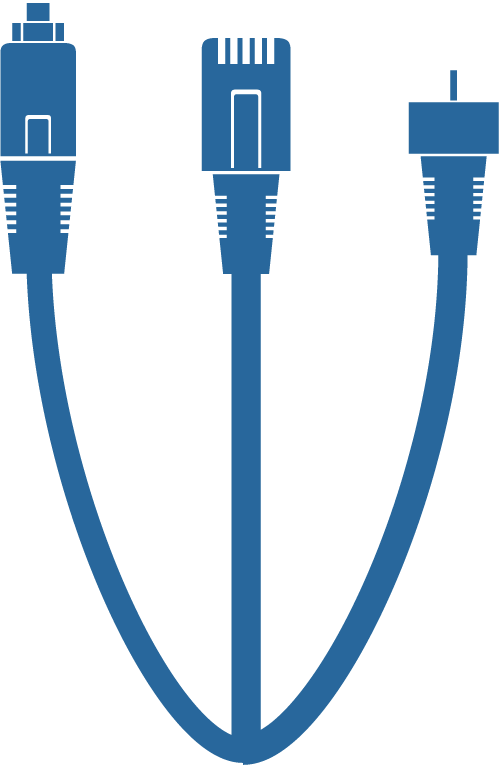NBN Cabling Guide Part 2
Now we've looked at the different types of NBN Cabling to your home, from FTTP to FTTC, we need to look at in-home cabling to work out the best way to deliver the NBN throughout your home.
So, now we know all about the types of NBN cabling (check out NBN Cabling Guide - Part 1 for an update), it’s time to move on to in-home cabling. In-home cabling is a huge consideration when switching over to the NBN. Ensuring your home is adequately equipped to deliver the speeds that you are wanting from the NBN, and that the NBN can offer, is a big part of the NBN network and something a lot of people overlook.

In-home NBN cabling
When your home is being switched over to the NBN, you may get up to three different types of NBN hardware. These include :
- An NBN connection box: this is usually installed in a room at the front of your home, or in your garage
- The home gateway: this will usually be installed next to the NBN connection box, and will have a socket for the internet and another socket for telephone lines. It should also have Wi-Fi or wireless capabilities and be located in an area in which a wireless connection can reach your entire home
- The cabling: the cabling usually needs to support both telephone and internet services, so is called Cat 5 or 6 cabling. Cat 6 offers higher speeds than Cat 5, and lasts longer
- A home distributor: a useful addition, as it allows you to have the NBN connection box, home gateway and room cabling in the same place and protected
- An RJ45 socket: another useful addition, as can be mounted on a wall plate and the cabling from the home gateway to each room is terminated at the socket
Generally, people with receive an NBN connection box in addition to a home gateway (or router/modem) that will connect up to the NBN connection box after choosing your service provider.
In-home registered NBN cabler
Only registered cablers can complete in-home cabling in walls, ceilings and floors under the Telecommunications Act 1997 - so do not attempt to complete them yourself! All registered cablers will have a card that shows their registration as well as any additional qualifications to install Cat 5 or 6 cable, so make sure you ask any cabler to see this before they commence their work.
Once the cabling is complete, they must give you a compliance form, otherwise known as the ‘Telecommunications Cabling Advice Form 1 (TCA1)’. The form should state the work that has been completed and contains a statement that reads, 'I hereby certify that the cabling work described in this advice complies with the Wiring Rules (AS/CA S009 or its replacement).' If in doubt, speak to your local registered data cabler for more information.

Do’s and Don’ts of NBN connection
When you are considering in-home cabling options, there are a few things you should and should not do :
You should…
- Talk to a registered cabler
- Employ a registered cabler to complete any works
- Make sure you obtain a TCA 1 form for any cabling work that is completed
- If you are building or renovating your house, ensure you have as much cabling installed as possible during this process as this is the cheapest option available
- Make sure you plan your cabling around the technology and devices you have/want in your home or office
You shouldn’t…
- Do the cabling yourself! It is illegal and potentially dangerous
- Use just any cabler you can find - ensure they are appropriately registered
- Don't use telephone extension cords for connecting your internet devices
NBN questions to consider
Is my area ready for NBN installation?
Check on the NBN Co website to see if your area is ready for NBN installation. Remember, you have 18 months to change over to the NBN, or your telephone and internet service will be permanently cancelled.
Should I have in-home cabling?
This is a very relevant question, and NBN Co has responded as follows, ‘In-home cabling is strongly recommended as it allows property owners to choose the location of NBN supplied equipment and may improve connectivity and data speeds within the premises.’ So, the answer is yes!

Who can perform in-home cabling?
Only appropriately registered cablers may perform in-home cabling works in your home or office when it comes to the NBN. All cabling work must adhere to NBN standards and be in accordance with Australian Standards AS/CA S009 2013.
Where should my phone and data ports be located?
This is most applicable to new homes being built, however, every homeowner needs to consider if the wiring and location of phone and data ports in their home are suitable for NBN connections. It really depends on how and where you use your devices as to where your ports will need to be located. It is suggested that you speak with your local cabling specialist and they can assist with placement.

Your local and reliable in-home NBN cablers in Melbourne
If you have any questions regarding in-home NBN cabling or the requirements for your Melbourne home or business, give 1st Call Electrical Services a call on 1300 016 671 or complete an online NBN cabling enquiry form today.
Resources: NBN Co (How to Connect): https://www.nbnco.com.au/residential/how-to-connect
NBN Co (Preparing to Connect): https://www.nbnco.com.au/residential/how-to-connect/preparing-for-the-nbn
NBN Co (New Property Developments): https://www.nbnco.com.au/residential/how-to-connect/preparing-for-the-nbn/new-property-developments
NBN Co (Cabling): https://www.nbnco.com.au/develop-or-plan-with-the-nbn/new-developments/design-build-install/cabling
NBN (Network Technology): https://www.nbnco.com.au/residential/learn/network-technology
Australian Standards AS/CA S009 2013: http://www.acma.gov.au/theACMA/customer-cabling-rules-and-requirements
Choice - Home Cabling for the NBN: https://www.choice.com.au/electronics-and-technology/internet/connecting-to-the-internet/articles/home-cabling-for-the-nbn
